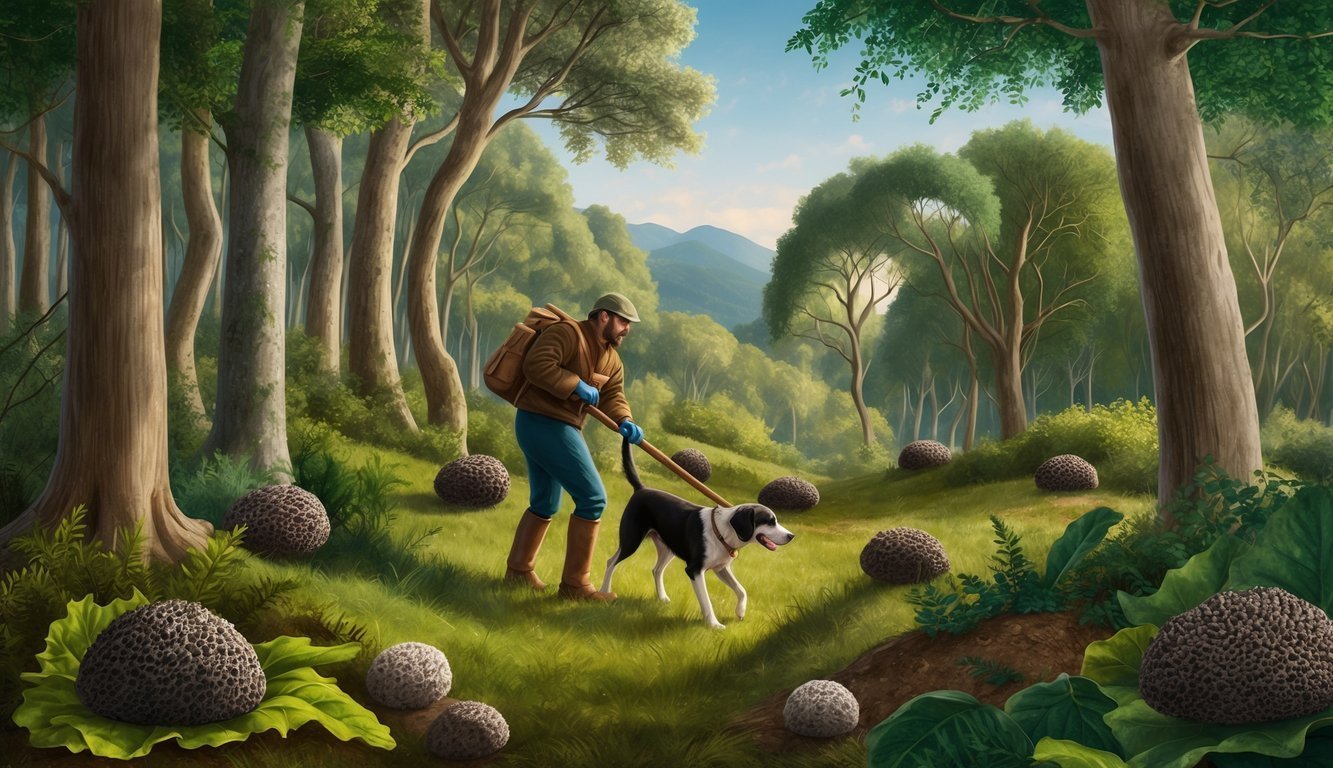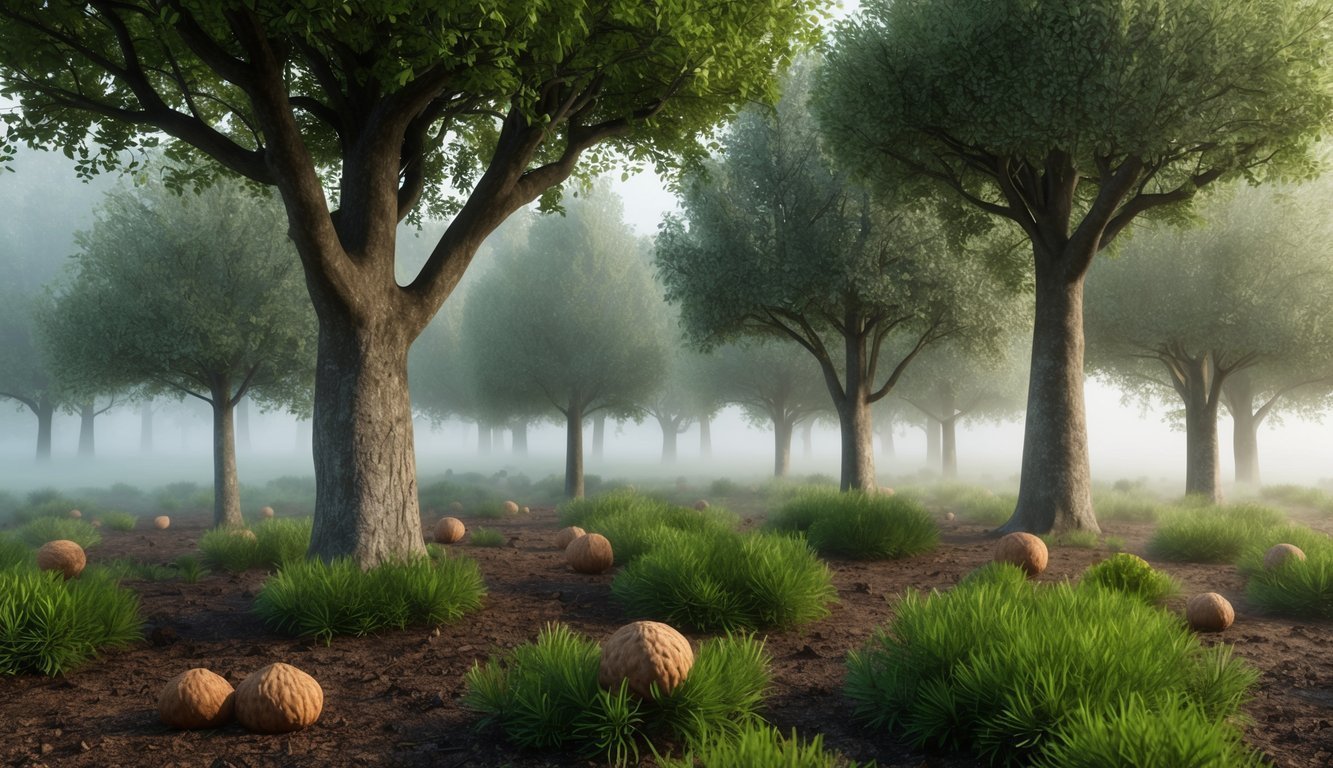Truffles are one of Italy’s most luxurious and sought-after delicacies.
When you visit Italy, you’ll want to learn about the top varieties that bring unique flavors to the cuisine. Understanding these prized truffle types can elevate your dining experience and help you appreciate Italian culinary traditions even more.
These fascinating fungi grow near the roots of specific trees and are known for their strong, earthy aromas.
Exploring the world of truffles can lead you to local festivals and markets where you can taste fresh truffles and specialty dishes made with them.
It’s a journey that adds depth to your Italian adventure.
History of Truffle Hunting in Italy

Truffle hunting in Italy has a rich past filled with tradition and cultural importance.
You’ll find that this activity goes back centuries and has shaped local communities in many ways.
Here’s a look at how it all began and what it means today.
Origins and Early Uses
Truffles have been sought after in Italy since ancient times.
The earliest records date back to the Roman Empire, where truffles were prized for their unique flavor and aroma.
They were often associated with luxury and served at lavish banquets.
In these early days, people harvested truffles from the wild.
They used natural indicators like certain trees and animals to locate them.
The knowledge of finding truffles was passed down through generations, often through oral tradition.
This method of hunting laid the groundwork for the techniques used today.
Cultural Significance
Truffle hunting is not just about finding food; it is part of Italy’s cultural identity.
It connects people with nature and fosters a deep understanding of the land.
Local communities often celebrate truffle festivals, showcasing this culinary treasure.
The art of truffle hunting, known as “tartufismo,” emphasizes skill and relationship with trained dogs.
Hunters, or “tartufai,” develop a bond with their dogs, making them essential partners in this hunt.
This tradition is now recognized by UNESCO as part of Italy’s intangible cultural heritage, highlighting its significance.
Growing Conditions and Locations

Truffles thrive under specific conditions that make certain regions of Italy the perfect place for these gourmet fungi.
Understanding what they need can enhance your appreciation of this culinary treasure.
Ideal Climate and Soil
Truffles prefer a Mediterranean climate, featuring warm summers and mild winters.
They grow best in well-drained, alkaline soils with a pH level between 7.5 and 8.3.
- Key factors for truffle growth:
- Temperature: Ideal between 15°C to 25°C.
- Humidity: Moderate levels that provide moisture without over-saturation.
- Trees: They form symbiotic relationships with tree roots, especially oak, hazel, and beech.
In these conditions, truffles develop their rich flavors and aromas.
The right soil and climate are essential for producing high-quality truffles that chefs love to use.
Famous Regions for Truffles
Italy is home to several renowned regions known for their truffle production.
Each area has its own unique characteristics.
-
Piedmont:
- Famous for the white truffle.
- Its dense forests and limestone-rich soil provide ideal growth conditions.
-
Tuscany:
- Known for both black and white truffles.
- Rolling hills and chestnut trees offer the perfect environment.
-
Umbria:
- Features black truffles that can be found in rich woodland areas.
- The region’s humid climate supports truffle development.
These regions attract truffle hunters and food enthusiasts alike.
Exploring these areas adds excitement to your truffle journey in Italy.
Frequently Asked Questions
When it comes to truffles in Italy, there are many interesting aspects to consider.
From the luxurious types you might find to tips for selecting the best, here are some common questions answered to help you enjoy the world of Italian truffles.
Which types of truffles are considered the most luxurious finds in Italy?
The two most luxurious varieties are the white truffle and the black truffle.
The white truffle, mainly found in the Piedmont region, is especially prized for its intense aroma and flavor.
Black truffles have a unique taste and are often used in gourmet dishes.
What’s the best time of year to go truffle hunting in Italy?
The best time to hunt for truffles varies by type. White truffles are usually harvested from September to January. Black truffles can typically be found from late autumn through winter.
Planning your visit during these seasons can increase your chances of finding them.
Can you give me some tips on choosing quality truffles when shopping in Italy?
When selecting truffles, look for ones that are firm and well-shaped.
A good truffle should have a strong, rich smell.
Also, avoid any that appear dry or have blemishes.
Freshness is key to experiencing their full flavor.
What factors contribute to the high cost of Italian truffles?
The high price of Italian truffles comes from their rarity and the labor-intensive process of finding them.
Truffles often grow in specific conditions and are usually dug up by trained dogs.
Prices can also fluctuate based on demand and the harvest yield each season.
Could you share some popular Italian recipes that feature truffles?
Truffles are commonly used in simple dishes to let their flavor shine.
Classic options include truffle risotto and pasta with truffle sauce.
You can also use truffle oil to elevate pizzas or serve fresh truffles shaved over eggs and salads.
How do the flavors differ among Italy’s various truffle varieties?
White truffles are known for their strong, earthy aroma and a slightly garlicky flavor.
Meanwhile, black truffles have a more subtle, earthy taste.
Each variety brings its unique flavors to dishes, enhancing the overall culinary experience.
